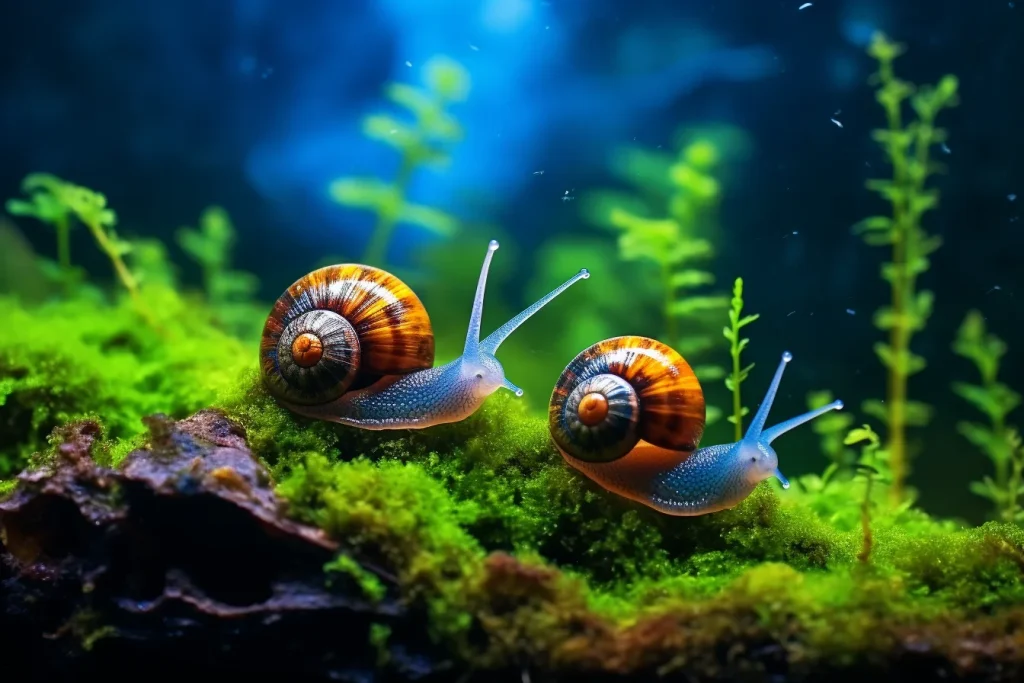Air stones are an essential part of any healthy aquarium. As an experienced aquarist for over 10 years, I’ve found that they provide vital oxygen to fish, help circulate water, and can add decorative interest to tanks. But with so many types and sizes available, it can be tough to pick the right one. This comprehensive guide covers everything you need to know about selecting, using, and caring for aquarium air stones.
Why Are Air Stones Important for Aquariums?
Air stones, also called bubble stones, are small porous decorations that diffuse air into the tank water. This serves several key functions:
- Oxygenation: Fish breathe oxygen dissolved in the water. Running air through an air stone creates bubbles that help concentrate oxygen for aquatic life [1].
- Circulation – The bubbles promote water movement, helping prevent stagnant areas where waste can accumulate [2].
- Aesthetics – Air stones create bubbling effects for visual appeal. They can be used to build “volcano” or “treasure chest” ornaments.
Maintaining high oxygen levels and water circulation is essential for fish health. Therefore, air stones are a must for any aquarium system.
Choosing the Right Air Stone
Many factors determine which air stone is best for your tank. Consider the following when deciding:
Tank Size
Air stone capacity should match aquarium volume. A small stone won’t oxygenate a large tank sufficiently. Make sure to select a model with enough bubbling power for the size you need [3].
- Nano tanks (under 20 gal) – Compact nano-air stones work well here.
- Medium tanks (20-40 gal) – Mid-range air stones are ideal for these sizes.
- Large tanks (40+ gal) – Use a larger air stone or multiple smaller ones for sufficient aeration.
Air Stone Material
Air stones come in different materials, each with pros and cons [4]:
- Ceramic – Extremely durable but more expensive. Long-lasting and easy to clean. May come in decorative shapes.
- Plastic – Affordable option. Available in a range of sizes and shapes but not as robust as ceramic.
- Glass – Classy translucent look. Prone to breaking if handled roughly.
- *Mineral – Made of natural porous rocks. Release more fine bubbles but are heavy and prone to clogging.
I prefer ceramic for durability, performance, and appearance, but plastic works well for nano tanks on a budget.
Air Stone Size and Shape
- Small, round stones – Best for compact tanks. Release fine bubbles in a concentrated area.
- Long rectangular bars – Evenly distribute bubbles across the whole tank. Great for wide aquariums.
- Cylindrical diffusers – Emit tons of micro-bubbles. Provide the most oxygenation.
Choose a shape that evenly aerates your full tank volume. Rectangular and cylindrical stones work well for larger aquariums.
Specialty Air Stones
Some models have additional features like:
- Multi-colored LEDs – For lighting effects. Help create a lively ambiance [5].
- Adjustable valves – Control bubble output for each connected stone individually. Useful for customizing flow.
- Sucker attachments – Let you removably fix the stone in place. Help provide stability.
While not essential, these can be beneficial for aesthetics and convenience. LED lighting, in particular, takes tank decor to the next level.
Setting Up and Using Air Stones
Once you select the right air stone, proper setup, and maintenance are key for success. Follow these best practices:
Installation Tips
- Place the air stone near the bottom of the tank to maximize water circulation. Positioning it horizontally on the substrate works well [6].
- If suspending the stone higher up, use suction cups or aquarium-safe adhesive to securely mount it. This prevents the bubbling from dislodging it.
- Ensure all connector tubing is securely attached. Check for leaks that can compromise bubble output.
Maintenance
- Clean the air stone regularly by detaching it and soaking it in a bleach solution. Rinse thoroughly before returning it to the aquarium [7].
- Check airline tubing for buildup slowing airflow. Replace cracked or defective tubing.
- Monitor bubble output. Declining flow indicates a clogged stone. Gently clean with a pipe brush or replace if needed.
With proper installation and routine care, air stones can run reliably for years. Taking good care of them helps maximize oxygenation.
Top Air Stones on the Market
I’ve tested many AirStone models over the years. Here are my top picks available on Amazon based on quality, reviews, and value:
- Pawfly Aquarium Air Stone Bar – Solid performance at a budget price. Made of quality mineral material. Rated 4.4 stars with over 5,000 reviews [8].
- Hygger Cylinder Air Stone – This popular acrylic diffuser provides tons of fine bubbles. Rated 4.6 stars with almost 3,000 reviews [9].
- Nicrew LED Air Stone – Cool LED lighting effects. Rated 4.2 stars with almost 1,000 reviews [10].
- VIVOSUN Air Stone – Durable mineral air stone at a reasonable cost. Rated 4.5 stars with over 1,500 reviews [11].
- Aquaneat 2-pack Air Stones – Good value set of 2 ceramic stones. Rated 4.5 stars with almost 1,000 reviews [12].
Check out all of my latest recommendations on my aquarium blog at [discus-fish-secrets.com]
The Importance of Quality Aquarium Air Stones
Installing a quality air stone is one of the best things you can do to keep aquarium inhabitants healthy. Not only do they oxygenate the water, but the bubbles promote circulation and help prevent hazardous waste buildup.
With so many options available, it can be tricky to find the perfect airstone for your tank. Factors like size, shape, material, and special features determine performance and suitability. Proper installation and regular cleaning ensure your air stone will effectively oxygenate for years.
Upgrade your tank today with one of the top-rated air stone models featured above. Your fish will thank you! Have more questions about selecting and caring for air stones? Let me know in the comments!



